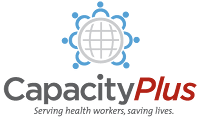Deployment
How The Government Intervention Affects the Distribution of Physicians in Turkey Between 1965 and 2000
The aim of this study is to analyse the distribution of physicians, GPs and specialists between the years 1965-2000 and the efficiency of the strict 15 year government intervention (1981-1995). [from abstract]
- 576 reads
Context Analysis: Close-to-Community Providers in Mozambique
This report combines findings from a desk review,a mapping of [Close-to-Community] CTC providers and data collected during qualitative explorations carried out in two selected districts of Maputo Province as part of the context analysis. [from introduction]
- 659 reads
Applying the Workload Indicators of Staffing Need (WISN) Method in Namibia: Challenges and Implications for Human Resources for Health Policy
As part of ongoing efforts to restructure the health sector and improve health care quality, the Ministry of Health and Social Services (MoHSS) in Namibia sought to update staffing norms for health facilities. To establish an evidence base for the new norms, the MoHSS supported the first-ever national application of the Workload Indicators of Staffing Need (WISN) method, a human resource management tool developed by the World Health Organization. [from abstract]
- 1040 reads
A Synthesis and Systematic Review of Policies on Training and Deployment of Human Resources for Health in Rural Africa
The primary question guiding the review was: What is known about policies to support training and deployment of nurses, midwives and doctors for maternal-child health care in rural Africa? [from summary]
- 661 reads
Addressing the human resource for health crisis in Tanzania: the lost in transition syndrome
The objective of this study was to improve knowledge on the HRH status in Tanzania by analyzing what happens to the number of medical doctors (MD) and doctor of dental surgery (DDS) degree graduates during the transition period from graduation, internship to appointment. [from abstract]
- 729 reads
Nursing and Midwife Staffing Needs in Maternity Wards in Burkina Faso Referral Hospitals
The aim of this study was to measure the capacity of referral hospitals’ maternity services to cope with the demand for health services after the implementation of this policy. [from abstract]
- 823 reads
The Last Word: Collaborating for Healthcare Improvement
Reflecting on service delivery in northern, rural or remote Canada, Dr. Roger Strasser (Dean of the Northern Ontario School of Medicine) and Erin Leith (Director, Collaboration for Innovation and Improvement, Canadian Foundation of Healthcare Improvement) discuss the significant momentum generated by the Canadian Recruit and Retain Conference and the influence and impact this will have on healthcare in these often under-served regions. [from introduction]
- 672 reads
Human Resources for Health and Universal Health Coverage: Fostering Equity and Effective Coverage
The paper reports on country experiences using an analytical framework that examines effective coverage in relation to the availability, accessibility, acceptability and quality (AAAQ) of HRH. [from abstract]
- 917 reads
Right Time, Right Place: Improving Access to Health Service Through Effective Retention and Distribution of Health Workers
This series draws from studies in a range of countries and provides new insights into what can be done to improve access to health through more effective human resources policies, planning and management. The primary focus is on health workforce distribution and retention. [from abstract]
- 527 reads
Redistributive Effects of the National Health Insurance on Physicians in Taiwan: A Natural Experiment Time Series Study
This study examines the effects of implementing national health insurance on the problem of geographic maldistribution of health providers in Taiwan. [from abstract]
- 699 reads
Distribution and Skill Mix of Human Resources for Health in Nepal
The Ministry of Health and Population of Nepal has identified major challenges in human resources for health, specifically in the shortage, distribution and skill mix of health workers in the country. This report aims to provide insight into specific challenges and policy recommendations for the ministry and concerned stakeholders. [from summary]
- 3384 reads
Attitudes of Undergraduate Medical Students of Addis Ababa University Towards Medical Practice and Migration, Ethiopia
This study was carried out to assess the attitudes of Ethiopian medical students towards their training and future practice of medicine, and to identify factors associated with the intent to practice in rural or urban settings, or to migrate abroad. [from abstract]
- 1275 reads
Monitoring Inequalities in the Health Workforce: The Case Study of Brazil 1991-2005
Using the case of Brazil, the authors measure changes in inequalities in the distribution of the health workforce and account for the sources of inequalities at sub-national level to identify whether policies have been effective in decreasing inequalities and increasing the density of health workers in the poorest areas between 1991 and 2005. [from abstract]
- 755 reads
What Influences National and Foreign Physicians' Geographic Distribution? An Analysis of Medical Doctors' Residence Location in Portugal
The present research sets out to investigate the current distribution of national and international physicians in Portugal, with the objective to understand its determinants and provide an evidence base for policymakers to identify policies to influence it. [from abstract]
- 887 reads
Chances for Change: Dutch Measures to Improve the Global Distribution of Health Personnel
This publication presents measures composed by the Dutch Alliance for Human Resources for Health, a group concerned about the global maldistribution of human resources for health, to be taken by Dutch actors to improve the distribution of health staff across countries. [from preface]
- 1199 reads
Human Resources for Health in Southeast Asia: Shortages, Distributional Challenges, and International Trade in Health Services
This article considers the shortage and maldistribution of health personnel in countries in southeast Asia in the context of international trade in health services. It analyzes the situation and identifies factors contributing to shortages and maldistribution in many countries in the region. The effect of trade in health services on the health workforce is discussed. [from introduction]
- 2867 reads
Measuring Health Workforce Inequalities: Methods and Application to China and India
This study proposes methods for measuring inequalities in the distribution of health workers in a country by adapting techniques from the economics literature on income inequality to the measurement of health workforce distribution across geographical units. [from summary]
- 4542 reads
Striking the Right Balance: Health Workforce Retention in Remote and Rural Areas
This article discusses the issue of maldistribution, which is arguably the most critical workforce challenge, not only for achieving universal coverage but also for addressing inextricably linked workforce problems such as shortages and skill imbalances. In many countries, overall shortages are exacerbated, indeed even caused, by severe maldistribution. [adapted from author]
- 1721 reads
Inequality in Access to Human Resources for Health: Measurement Issues
This background paper to the World Health Report 2006 discusses the various options to allow comparative analysis of inequalities in the distribution of health workers across and within countries, using a single summary measure of this distribution. The paper first presents the scale problem of various inequality indices, then tests how sensitive a simple ratio measure of the distribution of health workers is to changes in scale.
- 1737 reads
Human Resources for the Delivery of Health Services in Zambia: External Influences and Domestic Policies and Practices: a Case Study of Four Districts in Zambia
The objective of this study was to analyse in what way HRH recruitment, deployment and retention at the district level are influenced by external funding; and to what extent this is in line with national and district policies and strategies. [from abstract]
- 3034 reads
Transition of Physician Distribution (1980–2002) in Japan and Factors Predicting Future Rural Practice
The maldistribution of physicians between urban and rural areas has long been an important political issue in Japan. The aim of this study was to evaluate long-term transition in the geographic distribution of physicians, and to reveal which rural physician characteristics predict their retention in rural areas. [adapted from abstract]
- 1718 reads
Distribution and Transitions of Physicians in Japan: a 1974-2004 Retrospective Cohort Study
This article presents the results of a study analyzing national trends in Japan regarding the distribution and career transitions of physicians among types of facilities and specialties over a 30-year period. [adapted from abstract]
- 1488 reads
Making an Impact: Transforming Service at a Remote Hospital in Kenya
This issue of Voices discusses the impact of the Emergency Hiring Plan developed in combination with the Capacity Project and the Kenyan Ministry of Health to increase the number of qualified professionals working in Kenya’s public health facilities. [adapted from author]
- 2081 reads
Decentralization - Centralization Dilemma: Recruitment and Distribution of Health Workers in Remote Districts of Tanzania
This study highlights the experiences and challenges associated with decentralisation and the partial re-centralisation in relation to the recruitment and distribution of health workers. [from abstract]
- 10691 reads
Supply, Distribution and Migration of Canadian Physicians 2011
This report utilizes statistical information derived from a central data source for resource planning regarding the supply, distribution and migration of physicians in Canada. [from introduction]
- 1855 reads
Health Worker Densities and Immunization Coverage in Turkey: a Panel Data Analysis
Increased immunization coverage is an important step towards fulfilling the Millennium Development Goal of reducing childhood mortality. Recent cross-sectional and cross-national research has indicated that physician, nurse and midwife densities may positively influence immunization coverage. However, little is known about relationships between densities of HRH and vaccination coverage within developing countries and over time. This study examines HRH densities and coverage of the Expanded Program on Immunization (EPI) in Turkey from 2000 to 2006. [from abstract]
- 5583 reads
Role of Community-Based Surveillance in Health Outcomes Measurement
A community health planning and service strategy was started in Ashanti region in 2001 with the intention of improving geographic access to comprehensive health care. The region used community-based surveillance as an entry point. The implementation process and health outcomes were tracked and evaluated after a year. [from summary]
- 6005 reads
Measuring Inequalities in the Distribution of Health Workers: the Case of Tanzania
The overall human resource shortages and the distributional inequalities in the health workforce in many developing countries are well acknowledged. However, little has been done to measure the degree of inequality systematically. This paper describes and measures health worker distributional inequalities in Tanzania on a per capita basis; and it suggests and applies additional health care needs indicators in the measurement of distributional inequalities. [adapted from abstract]
- 3748 reads
China’s Human Resources for Health: Quantity, Quality, and Distribution
This paper analyzes China’s current health workforce in terms of quantity, quality, and distribution. Unlike most countries, China has more doctors than nurses. Doctor density in urban areas was more than twice that in rural areas, with nurse density showing more than a three-fold difference. Over the past decade there has been a massive expansion of medical education, with an excess in the production of health workers over absorption into the health workforce.
- 4874 reads
Health Worker Recruitment and Deployment Process in Kenya: an Emergency Hiring Program
Despite a pool of unemployed health staff available in Kenya, staffing levels at most facilities were only 50%, and maldistribution of staff left many people without access to antiretroviral therapy. Because in the current system it takes one to two years to fill vacant positions, even when funding is available, an emergency approach was needed to fast-track the hiring and deployment process. A stakeholder group was formed to bring together leaders from several sectors to design and implement a fast-track hiring and deployment model that would mobilize 830 additional health workers.
- 4609 reads




